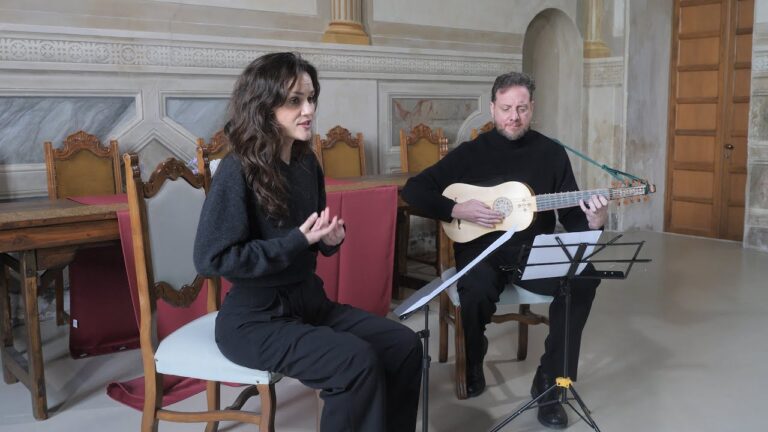This lesson comes from my book Classical Guitar Repertoire Lessons Grade 4 – Six pieces at the grade four level with dedicated lessons preparing you for each piece.
Orlando Sleepeth (Poulton No.61) by John Dowland (1563-1626) – YouTube Video Lesson Link. I perform the piece in three ways: regular tuning, relative lute tuning, and with a capo. You’ll be playing this piece in two different tunings to gain an awareness of the options available to the modern classical guitarist.
I play all Dowland’s works in relative lute tuning (3rd string tuned down to F sharp). This places the instrument in the same relative tuning as a Renaissance lute. It’s even closer to Dowland’s lute if we place a capo on the third fret. Most of the time, Dowland’s music is much easier in relative lute tuning because of the open F sharp on the third string. The music was composed with this tuning in mind so the chord shapes generally work better in the original tuning. That said, there are occasions when regular guitar tuning works fine. This piece is one such occasion, but for the sake of practicing and understanding the arranging process, we will play the piece in both tunings. Try out the first four bars of the work as well as a D Major scale in relative lute tuning.
When you play the actual piece you will notice that the relative lute tuning requires a barre in this particular work. This is the reason you see this work in regular tuning in many guitar anthologies. Performers often play sets of works (three or four of Dowland’s pieces in a set), and most pieces only work in relative lute tuning so it still makes sense to play in the original tuning to avoid re-tuning between pieces. The tuning you choose doesn’t matter, being informed and aware of the choices is the important factor.
More Info: Why do guitarists use capos and 3rd string F# tuning?
Matthew McAllister plays Orlando Sleepeth (Poulton No.61) by John Dowland (1563-1626). This comes via his amazing YouTube channel where he’s recently been featuring a number of student level works. It’s great to hear professional players play right from my edition. Charming piece and great phrasing by McAllister, plus that lovely rhythmic change in this work.





Thank you Bradford, yes, I have been going through your books from the start and your comments make sense. I think I will shoot for enough competence on a piece that I would feel comfortable playing it in front of others with the sheet music, the metronome is also a good idea and something I haven’t done.
I appreciate the books and video support. I’ve played guitar for over 50 years, acoustic and classical. I am using your books to revisit reading music and to enable me to broaden my classical playing since my hands / fingers are increasingly finding the steel / acoustical playing more difficult. I am starting on Book 4 now but am wondering at what level of proficiency should I be aiming for on the new pieces? I am certainly not a going to perform for anyone but perhaps family members. I am trying to get the musical concepts and become proficient but not worry too much about complete memorization or total proficiency before moving on. Too much time on a piece can get tedious unless it’s a piece I really enjoy playing. Any minimum standard tips in terms of when to move on to the next lesson? Thank you
Have you played the any of the previous books/grades? On a basic level you want to be able to feel comfortable and relaxed while playing and have a reasonable amount of accuracy. Random mistakes are one thing but mistakes in the same place each time means that something needs to be resolved. The musicality should be rhythmically confident (be able to play with a metronome for a basic level, but really feel the beat otherwise), flowing and legato or sustain when needed.
Thank you, starting Grade 4 now, really appreciate the guidance and books.
Thank you! So good!